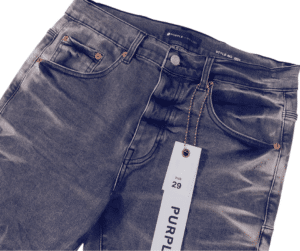What You Need to Know to Keep Your Roof Safe
The roof has to be a top priority in any home-maintenance list. By keeping your roof in good condition, you can avoid costly repairs. If your roof becomes too damaged, you may need to replace it completely. Here are some things about different types of roofs you need to know to keep your roof safe.
The Roof Material
The most commonly used roofing materials today are:
- Asphalt shingles: These are suitable for all environmental conditions. They come in several standards of quality, so you need to ask what tests they have passed before you choose one. They have been tested in winds up to 150 miles per hour and some can withstand hail. They last about 20 years.
- Metal roofing: A type that comes in vertical panels and may resemble tile, slate or shake. It lasts for about 60 years, sloughs off snow and rain, resists high wind and is fire-proof.
- Stone-coated steel: Interlocking panels that look like slate or clay and resist heavy rain and winds up to 120 miles per hour. They also resist freeze-and-thaw cycles and are fireproof. Some are warranted for the life of the house. Slate will last 100 years and is fireproof. It also sheds water and dampness and resists fungus and mold. It is a bit brittle and may not be the best if you live in a place that has heavy hail.
- Rubber slate: Looks like a natural stone and is easy to cut for intricate roof lines. It will also last up to 100 years, but satellite dishes and hail can damage it. Concrete and clay tiles are roofing materials that can withstand storm damage from tornadoes and hurricanes and even earthquakes. They are heavy, so they may need extra support. They are good for warm, dry areas.
- Green roof: Needs extra structural support and a vapor barrier between the soil and the ceiling. They grow plants and are great for insulating the home. Green roofs may last for about 40 years. Built-up roofing is this type of roofing that is only recommended for flat roofs. It consists of layers of asphalt, tar or other adhesive topped with an aggregate.
Regular Inspections Inside
To avoid expensive and inconvenient issues in the future, you need to make regular inspection of your roof. You should start inside your house and look for any water stains or tiny cracks in the ceilings of all the rooms covered by the roof. Blistering and bubbling paint are signs there is moisture leaking inside the house. Dark spots may mean there is mold starting to grow. Especially check around fireplaces and anywhere else there are joints.
Regular Inspections Outside
Your roof needs to be inspected from the outside also. It may require climbing a ladder or using binoculars. If this isn’t a safe option for you, it’s better to find a roofing expert to do it for you. In any case, do not walk on your roof. Instead, look for chipped or buckled shingles or any areas that look uneven from a ladder.
Clean Your Gutters
Storm damage can cause a lot of debris to become stuck in your gutters. If it is left there, the runoff water will overflow and run down the outside or inside of your house. This can cause serious water damage and be a breeding ground for toxic mold. Clean gutters help prevent the roof from rotting and the basement from ending up with water damage.
Trim Overhanging Trees
Tree branches that touch your house may be a highway for rats, squirrels and other animals to find a hiding place in your attic or under your roof. On windy days, the branches may scrape your roof and even loosen shingles. The leaves that drop on your roof may retain moisture and gradually rot the tiles. During a storm, it is common for branches to be broken off and crash into the roof or even a window. Branches should be trimmed to about 10 feet from your roof.
Maintain Proper Insulation
Without proper insulation, the heat from your house could melt snow on the roof and cause ice dams when it refreezes. Proper insulation will keep your roof the same temperature as the outside environment and prevent the attractive but dangerous ice dams from forming. When ice dams start to form they will block run-off from the roof. This water will build up behind the ice dam and soak into the nearby walls and ceilings.
Stay Safe
Always consider your safety before tackling any problem connected with your roof. Make sure you are able to climb the ladder without feeling dizzy and that there is someone on the ground to take notes and hold the base of the latter if it starts to sway. Unless you have experience in roofing maintenance and know what you are doing, you could cause more harm than good if you try to fix shingles that appear to be damaged.
Why It Matters
Storm damage to your roof can cause a lot of problems. There are many negative things that can happen even if your roof vent fails. Not only will shingles and tiles be broken, but the wood in your roof or ceiling will also start to rot. This will allow moisture inside your walls that will grow mold. Water damage is one of the worst perils in a home because mold will start to grow in as little as 48 hours. Once the mold takes hold, it can be costly to remove and cause health hazards to the occupants.
Any type of roof can sustain damage, but preventative measures can make your roof last longer. If you catch problems while they are still small, you may avoid major repairs. Keep a lookout for water spots on your ceiling, a sagging roofline, overhanging tree branches, and clogged gutters. For a more detailed inspection, it’s better to get a professional because he or she will have the tools and experience to keep your roof safe.







